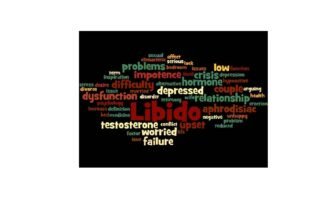Introduction
The water-soluble vitamin belonging to the vitamin B family is vitamin B5. It aids in energy production by metabolizing carbs and lipids. Additionally, it supports healthy liver, eyes, skin, as well as hair.
B5 is required for the synthesis and metabolism of coenzyme A, proteins, and lipids in humans. One of the lesser-known vitamins is B5, perhaps because it is rarely deficient. It helps the body break down the food, such as complex carbohydrates, into the simple form of sugar, such as glucose, as well as fats and proteins, which would in turn supply energy for performing numerous bodily functions. In the adrenal glands, it also aids in the production of several hormones, and fresh red blood cells, including cholesterol.
Roger John Williams, an American biochemist, discovered vitamin B5 around 1933. Vitamin B5 seems to be a precursor to coenzyme A (CoA), which again is required by numerous biochemical systems of the body.
Pantothenate, meaning pantothenic acid, is another name for vitamin B5. Greek “pantou,” which means everywhere, is where the word “pantothenic” originates. Pantothenic acid can be found in minor amounts in almost all meals.
Ingredients:
Because it may be found in a wide range of foods, pantothenic acid derives its identity from the Greek word pantos, which means “everywhere.” But even during manufacturing, food’s vitamin B5 becomes lost.
The names pantothenic acid and calcium pantothenate are used to refer to vitamin B5, which is also sold individually and is included in multivitamins and B complex supplements. It comes in many different forms, such as pills, soft gels, and capsules.
In which food it is found?
Compared to refined, canned, frozen foods; fresh meats, vegetables, and even whole unprocessed grains are higher in vitamin B5. Brewer’s yeast, corn, cauliflower, kale, broccoli, tomatoes, avocado, legumes, lentils, egg yolks, turkey, duck, chicken, milk, split peas, peanuts, soybeans, sweet potatoes, sunflower seeds, whole-grain bread as well as cereals, lobster, wheat germ, even salmon are some of the greatest sources.
How to Consume It?
Vitamin B5 does not have a Recommended Dietary Requirement, in contrast to other vitamins. Those following daily doses of dietary vitamin B5 are advised by experts:
Pediatric
- 6 months after a baby’s birth: 1.7 mg
- 7 months to 1-year-old infants: 1.8 mg
- Children aged 1 to 3: 2 mg
- Children aged 4 to 8: 3 mg
- Children aged 9 to 13: 4 mg
- Teenagers aged 14 to 18: 5 mg
Adult
- Ages 19 and over: 5 mg
- 6 mg for expectant mothers
- Breastfeeding women: 7 mg
This maximum daily amount that is unlikely to have negative side effects within the general population is known as the Tolerable Upper Intake Level (UL). Even though a hazardous level at increased intake has never been seen, a UL has not been determined for pantothenic acid.
How does it work?
Numerous crucial processes depend on vitamin B5. These consist of like generating glucose from food and producing cholesterol. It creates hormones associated with sex and stress and red blood cells are created.
Pantothenic acid, like all B vitamins, aids in the body’s ability to break down lipids, carbs, as well as proteins so that they may be used by the body to produce energy and repair tissues, muscles, and organs.
- A Coenzyme
Coenzyme A is produced in part by vitamin B5 throughout the body. Coenzyme A is crucial for turning food into fatty acids & cholesterol and also is essential in the creation of fatty acids.
In addition, coenzyme A is required for the production of sphingosine, a molecule that resembles fat and aids in the transmission of chemical signals inside of bodily cells’ digestive system
In addition to supporting a healthy digestive system, vitamin B5 also aids the body’s utilization of other vitamins, particularly vitamin B2. Pantothenic acid does not appear to lessen stress, whereas vitamin B2 aids in managing stress.
- Skincare
According to certain research, vitamin B5 moisturizes the skin and speeds up the healing of skin lesions. According to one study, using vitamin B5 as a dietary supplement helped with face acne as well as decreased the frequency of acne-related facial blemishes.
Following 12 weeks of consuming a B5 nutritional supplement, researchers saw a “highly significant reduction in the total lesion count.” To verify the findings, the authors urge additional investigations.
Pros And Cons
Pros:
Pantothenic acid, often known as vitamin B5, is crucial for such transformation of energy for a variety of biological functions. Additionally, it assists in transforming additional B vitamins into forms that the body can use.
This same immune system, as well as brain processes, is strengthened by vitamin B5, a powerful antioxidant plus neurological component. Additionally, it helps with stress management and fat metabolism.
According to studies, vitamin B5 pills are effective in treating respiratory conditions. It treats asthma as well as other respiratory conditions and lessens cough and cold symptoms.
Since vitamin B5 aids in the production of Coenzyme A, the liver’s abundance of this enzyme aids in the removal of toxic substances from the body, which in turn supports liver functioning.
Vitamin B5 is a strong antioxidant that contributes to wound healing, reduces skin inflammation disorders like acne, pimples, and blemishes, among others, and hydrates as well as moisturizes the skin. Considering they aid in giving the hair volume, structure, and gloss as well as reducing greying, vitamin B5 is utilized commercially as an ingredient for hair, skin, and makeup treatments. It aids in enhancing the vibrancy and cleanliness of skin when used as a skincare ingredient.
It is also used to treat a variety of skin issues, including itchiness, diaper rash, insect bites, stings, and infections. Additionally, it helps in both the prevention and management of cutaneous responses following radiation therapy.
Cons:
The need for a supplement is probably safe for persons who consume the advised daily allowance of Vitamin B5 or a little bit more, but anyone thinking about consuming a supplement should speak with either a doctor first.
Thus it is thought that pantothenic acid promotes stress reduction, which might also inadvertently help acne. The vitamin may, at most, cause your urine to become bright yellow. In a 2012 trial, using the supplement for 8 weeks had no negative side effects. Consuming Vitamin B5 gives a sound digestive system and creates the red blood cells necessary for the body to transport oxygen. The adrenal glands produce chemicals associated with sex and stress.
Frequently Asked Questions
Pantothenic acid decreases oil production and secretion and encourages sebum breakdown inside the skin’s oil glands using coenzyme A (CoA) metabolism. Additionally, it has been demonstrated that pantothenic acid (B5) enhances epidermal barrier performance, which aids in reducing acne outbreaks.
Supplemental vitamin B-5 is safe and well accepted by the body, according to research. Although pantothenic acid is water soluble, there is little likelihood that the body will overdose since the urinary tract system will filter and eliminate any excess.
RDA: Among men and women who are 19 years of age or older, the Recommended Dietary Allowance (RDA) includes 5 mg per day. The dosage rises to 6 mg as well as 7 mg daily for pregnancy and nursing, respectively.
Materials in high doses may compete with one another to be absorbed. Avoid taking calcium, zinc, and especially magnesium supplements simultaneously. Additionally, these three minerals are gentler on your stomach when taken with food, since if your doctor suggests taking them, do so at various meals or snacks.
One of the eight B vitamins includes vitamin B5. You can turn the protein, carbs, and fats in your diet into energy with the support of all B vitamins. In addition, B vitamins are required for Good health eyes, hair, and skin and efficient operation of the liver and neurological system.
Widespread in both plant and animal sources is vitamin B5. Sources consist of the meat includes beef, pork, chicken, duck, as well as turkey as well as animal parts such as the liver and kidney. The fish includes lobster, salmon, plus shellfish.
Conclusion
Thus the above water-soluble vitamin is an important component and is excellent for a variety of health benefits, including fat metabolism, better skin as well as eyesight, maintaining a good neurological system, and encouraging cardiac health.
And it’s also helpful for issues and disorders relating to the stomach, and muscles, including sleep patterns, therefore one should get adequate medical advice and consume the recommended amounts of pantothenic acid in their diet.
Good sources are Cereals and whole grain bread is grains. Although milling could remove up to 75% of the vitamin B5 content, whole grains is indeed a rich source of the vitamin. Egg yolks, milk, yogurt, and other milk products are dairy goods.






